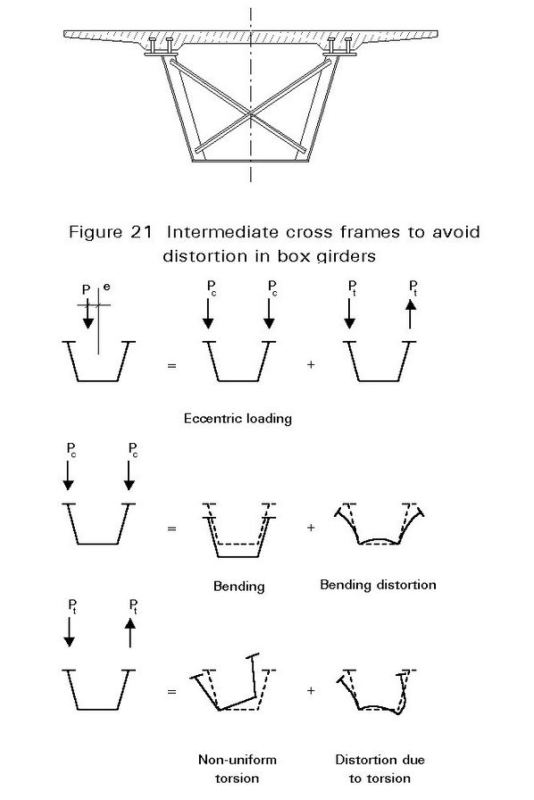Lomarandil
Structural
- Jun 10, 2014
- 1,917
All --
As some of you know, I end up working on lots of projects that involve reviewing as-builts and shop drawings for old bridges.
I got to wondering the other day. Many bridges with built up box section beams or truss members have internal diaphragms -- a thin plate (maybe 1/2") transverse to the section at regular intervals down the member. It often has a manhole, whether that was for fabrication or maintenance access, I'm not sure. As I was thinking, I realized, I don't know what the structural purpose of this diaphragm is.
Any insights?
Thanks!
As some of you know, I end up working on lots of projects that involve reviewing as-builts and shop drawings for old bridges.
I got to wondering the other day. Many bridges with built up box section beams or truss members have internal diaphragms -- a thin plate (maybe 1/2") transverse to the section at regular intervals down the member. It often has a manhole, whether that was for fabrication or maintenance access, I'm not sure. As I was thinking, I realized, I don't know what the structural purpose of this diaphragm is.
Any insights?
Thanks!

